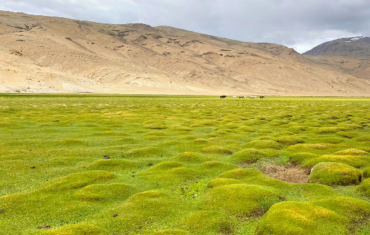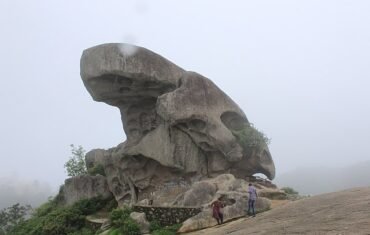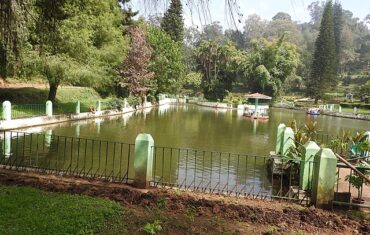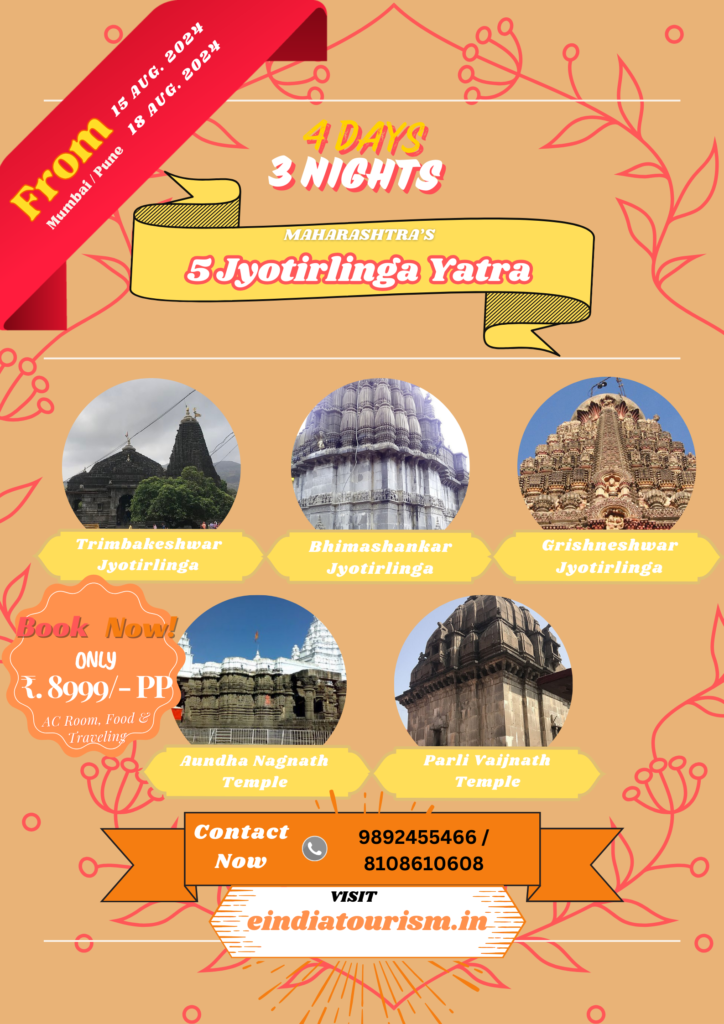Mahakali Caves Mumbai, also known as Kondivite Caves, are a group of 19 rock-cut monuments built between 1st century BCE and 6th century CE. This Buddhist monastery is located in the eastern suburb of Andheri in the city of Mumbai (Bombay) in western India. The caves contain rock-cut sculptures and stupas that depict various aspects of Buddhism and its history famous tourist attraction in Mumbai. Visit during North Mumbai One day Tour.
Distance From City Center Location of Mahakali Caves

Mahakali caves are located about 20 km from the city center of Mumbai. The nearest railway station is Andheri, which is connected to major cities like Mumbai, Pune, Ahmedabad, and Delhi. The nearest airport is Chhatrapati Shivaji International Airport, which is about 5 km away.
Timing/Entry Fees Mahakali Caves
Mahakali caves are open daily from 8:00 am to 5:00 pm. There is no entry fee for visiting the caves. However, there is a fee for photography and videography, which is Rs. 50 and Rs. 100 respectively.
How to reach Mahakali Caves
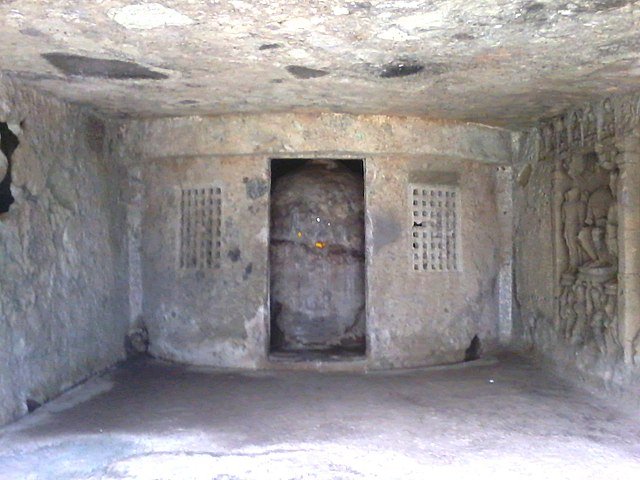
There are various modes of transport available to reach Mahakali caves. One can take a bus, taxi, auto-rickshaw, or car from the railway station or the airport. The most convenient and popular way is to take a metro train from Ghatkopar station to Marol Naka station and then take an auto-rickshaw or a bus to the caves.
Things to Do / Must See Mahakali Caves
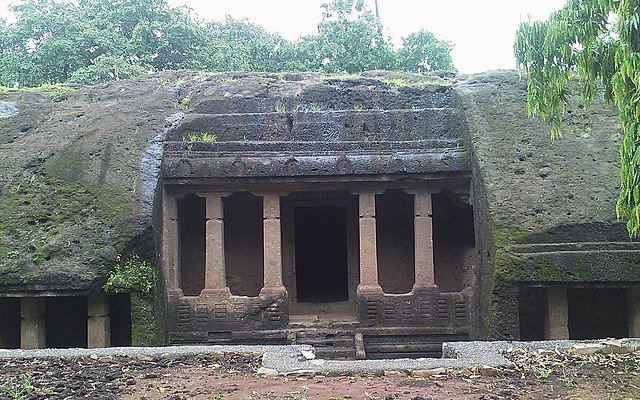
There are many things to do and see at Mahakali caves and its surroundings. Some of them are:
- Darshan of Mahakali Caves: The main attraction of the caves is the darshan of the rock-cut sculptures and stupas that adorn the walls and ceilings of the caves. The caves are numbered from 1 to 19 and each cave has a different theme and style. Some of the notable caves are:
- Cave 1: This is the largest and most impressive cave in Mahakali. It has a large hall with three entrances and two porticos. The hall has four rows of pillars that divide it into smaller chambers. The walls and pillars are carved with various forms and manifestations of Buddha, such as Shakyamuni (Historical Buddha), Maitreya (Future Buddha), Avalokiteshvara (Bodhisattva of Compassion), Tara (Female Bodhisattva), etc. The most famous sculpture in this cave is the Mahakali (Great Goddess), which is 3 metres (9.8 ft) high and represents a female deity associated with Buddhism.
- Cave 2: This is a smaller cave that has a shrine with a stupa (mound-like structure) at one end and a vestibule at the other end. The vestibule has four pillars with carved panels depicting scenes from Buddhist mythology and history. The panels include Jataka Tales (Stories of Buddha’s Previous Lives), Ashtamahasthana (Eight Great Places), Nirvana (Enlightenment), etc.
- Cave 3: This is another smaller cave that has a similar layout as Cave 2, but with different carvings on the pillars. The panels include Dhammachakra Pravartana (First Sermon), Dharmapala (Guardian Deities), Bodhi Tree (Tree of Enlightenment), etc.
- Cave 4: This is an unfinished cave that has only two pillars with carvings of Buddha and Bodhisattvas.
- Cave 5: This is also an unfinished cave that has only one pillar with carvings of Buddha and Bodhisattvas.
- Cave 6: This is a vihara (monastery) cave that has a shrine with a stupa at one end and a hall with cells for monks at the other end. The hall has four pillars with carvings of Buddhist motifs such as lotus flowers, lions, elephants, etc.
- Cave 7: This is another vihara cave that has a similar layout as Cave 6, but with different carvings on the pillars.
- Cave 8: This is a chaitya (prayer hall) cave that has an apsidal hall with a stupa at one end and an entrance at the other end. The hall has two rows of pillars that support a vaulted roof with wooden ribs. The walls are carved with niches containing Buddha images and floral patterns.
- Cave 9: This is an unfinished cave that has only one pillar with carvings of Buddha and Bodhisattvas.
- Cave 10: This is a small cave that has a shrine with a stupa at one end and an entrance at the other end. The entrance has two pillars with carvings of Buddha and Bodhisattvas.
- Cave 11: This is another small cave that has a similar layout as Cave 10, but with different carvings on the pillars.
- Cave 12: This is an unfinished cave that has only one pillar with carvings of Buddha and Bodhisattvas.
- Cave 13: This is another unfinished cave that has only one pillar with carvings of Buddha and Bodhisattvas.
- Cave 14: This is another unfinished cave that has only one pillar with carvings of Buddha and Bodhisattvas.
- Cave 15: This is another unfinished cave that has only one pillar with carvings of Buddha and Bodhisattvas.
- Cave 16: This is another unfinished cave that has only one pillar with carvings of Buddha and Bodhisattvas.
- Cave 17: This is another unfinished cave that has only one pillar with carvings of Buddha and Bodhisattvas.
- Cave 18: This is another unfinished cave that has only one pillar with carvings of Buddha and Bodhisattvas.
- Cave 19: This is another unfinished cave that has only one pillar with carvings of Buddha and Bodhisattvas.
- Mahakali Temple: This is a Hindu temple located near the caves that is dedicated to Mahakali, the Great Goddess who also appears in Buddhist iconography. The temple has an idol of Mahakali adorned with flowers and jewelry. The temple also hosts various festivals such as Navratri (Nine Nights) and Mahashivaratri (Great Night of Shiva).
- Powai Lake: This is an artificial lake located near the caves that was built in 1891 by the British to augment water supply to Mumbai city. The lake offers scenic views of the hills and forests around it. The lake also has a fountain that sprays water up to 40 feet high. The lake is home to various birds and animals such as crocodiles, ducks, geese, herons, kingfishers, etc.
Significance of Mahakali Caves
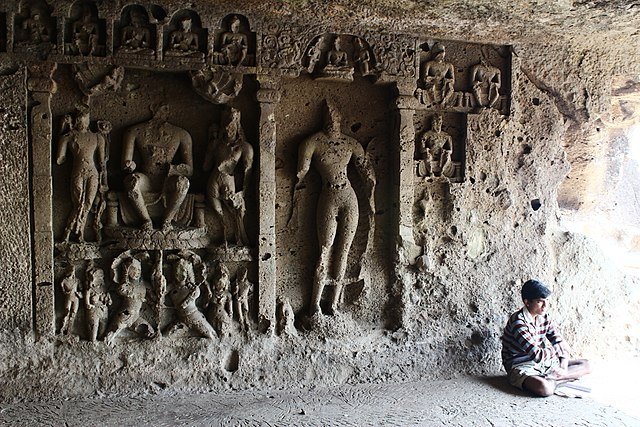
Mahakali caves have a great significance for the history and culture of India. They are one of the oldest and finest examples of rock-cut architecture in India and reflect the artistic excellence and religious diversity of ancient India. They also provide evidence of trade and cultural contacts between India and other regions such as Persia, Arabia, Southeast Asia, etc.
Mahakali caves are also significant for their location and environment. They are situated near one of the most developed and modern areas of Mumbai called Powai, which shares its name with the lake. Powai is known for its educational institutions such as Indian Institute of Technology Bombay (IITB) and National Institute of Industrial Engineering (NITIE); its corporate offices such as Larsen & Toubro (L&T), Nomura Holdings (Nomura), Deloitte (Deloitte), etc.; its residential complexes such as Hiranandani Gardens (Hiranandani), Lake Homes (Lake Homes), etc.; and its hotels such as Renaissance Mumbai Convention Centre Hotel (Renaissance), Ramada Powai Hotel & Convention Centre (Ramada), etc.
FAQ’s
Q: What are the timings for Visit?
A: The timings for Visit are from 8:00 am to 5:00 pm daily.
Q: What are the entry fees?
A: There is no entry fee for visiting the caves. However, there is a fee for photography and videography which are Rs. 50 and Rs. 100 respectively.
Q: What are the best time to visit?
A: The best time to visit is during winter (November to February) when the weather is pleasant and dry.
Conclusion
Mahakali Caves Mumbai are a treasure trove of ancient art, culture, and spirituality. They are a place where one can admire the craftsmanship and creativity of our ancestors and learn about their beliefs and values. They are also a place where one can enjoy nature’s beauty and bounty in harmony with wildlife. They are a place worth visiting for anyone who loves history, culture or nature…



